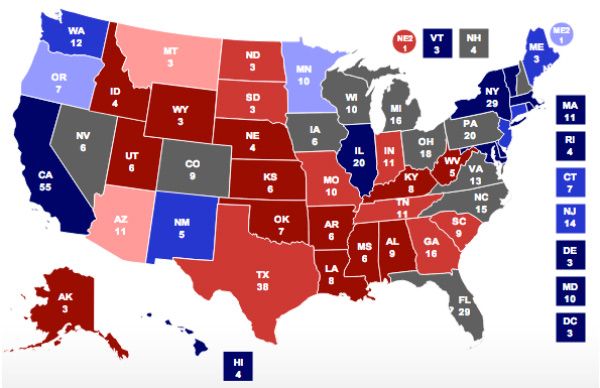Predicting Election Based on Presidential Polls, Electoral College

With the election only ten days away, many Americans are looking to presidential polls as a means for predicting the outcome of the election and possibly making the decision to vote for one candidate over the other.
Many voters recognize that the state they reside in will go to one candidate over the other regardless of their vote, but people still vote for the opposing candidate. Americans understand that the outcome of the election is determined by the Electoral College, not a popular vote.
This year, political observers are watching eleven states considered toss-ups or swing states. These are states that could go to either candidate. According to Real Clear Politics these swing states and their electoral votes include: Colorado (9), Florida (29), Iowa (6), Michigan (16), Nevada (6), New Hampshire (4), North Carolina (15), Ohio (18), Pennsylvania (20), Virginia (13), and Wisconsin (10).
Mitt Romney has a one point lead in the national aggregated presidential polls. Yet, the slight lead in the popular vote is not reflected in his hunt for 270 electoral votes. Obama has a ten electoral vote lead regardless of national presidential poll, largely due to carrying high electoral vote races like California (55), and New York (29). Based on likely outcomes in thirty-nine other states, Romney has 191 electoral votes and Obama has 201, with 146 up for grabs.
Voters looking to understand presidential polls and their outcome should focus on the toss-up states as indicators of the winner. Below are the swing states according to Real Clear Politics and the most recent polling in each state.
State
Colorado (9)
Florida (29)
Iowa (6)
Michigan (16)
Nevada (6)
New Hampshire (4)
North Carolina (15)
Ohio (18)
Pennsylvania (20)
Virginia (13)
Wisconsin (10)
Total Electoral Votes
Obama (201)
47.8
47.1
49.048.849.748.346.5
48.050.046.8
49.3
80
Romney (191)
47.8
48.9
46.7
44.8
47.2
47.2
50.3
45.7
45.2
48.0
47.0
57
Obama is pulling more electoral votes from the toss-up states regardless of Romney leading in Florida. Colorado will be the target of pushes from both campaigns as they’re locked in a virtual tie.
If the election was decided today, based on these numbers, Barack Obama would win with 281 electoral votes with Romney trailing at 248.






